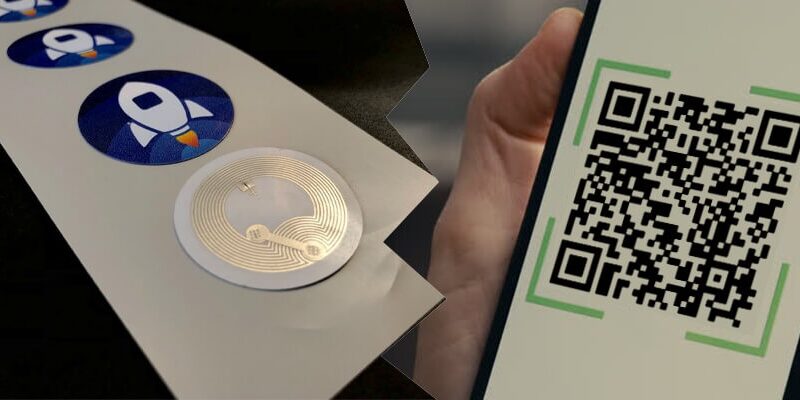Why Are NFC Tags Better Than QR Codes?
Introduction
QR codes are one of the most popular forms of data transmission on the internet today. They can be used to make payments and share information, but there are some drawbacks: they can be hard to read if your phone doesn’t have the right camera for reading them, they’re not always easy to find (and therefore use), and sometimes they’re just plain ugly! The good news is that there’s another option that’s gaining popularity: NFC tags. In this article, we’ll compare NFC tags with QR codes so you can decide which is best for your business or organization.
NFC tags are less likely to break.
NFC tags are made of plastic, which is a hard material that’s less likely to break than paper or other materials. This means that you can attach them to anything, even if it has sharp edges or corners. If you need to attach information about your Metal business cards on the side of your car, for example–or if you want an easy way for customers at an event booth to get in touch with their favorite brand–NFC tags can be used as an alternative option that won’t fall apart after one use.
In addition to being sturdy and durable, NFC tags are also small and light enough so they can be attached anywhere without weighing down whatever object they’re attached too much (like when using a QR code). This makes them perfect for things like attaching contact information inside wallets or backpacks or even attaching multiple pieces together, so people don’t lose them easily!
They can be configured to do more than just send you to a website.
NFC tags can be configured to do more than just send you to a website. For example, you can use them to trigger a phone call or text message, post something on social media, or send an email–all without having to pull out your phone and open an app.
They’re less likely to be covered up and missed by the user.
NFC tags are small and flat, so they can be hidden in plain sight. They can be attached to a card or keychain, or even stuck on the side of an object such as a display kiosk. This makes them easy for users to find and tap, which is why they’re less likely to be covered up or missed by someone using them than QR codes would be.
You can attach an image or contact info to an NFC tag.
NFC tags can be used for more than just URLs. You can also use them to attach images, contact information, and other forms of data to your product. Because it’s easier for consumers to scan an image than it is for them to type in a URL (especially on their phones), this makes NFC tags more effective at driving traffic back to your website or social media page.
For example: if you sell T-shirts with custom designs printed on them, you could use an NFC tag attached directly onto each shirt so that people can scan it with their phones while they’re wearing the shirt and get directed right back into an order form where they can purchase another one just like theirs!
You have more control over where people end up when they tap an NFC tag.
One of the biggest advantages of NFC tags over QR codes is that you have more control over where people end up when they tap an NFC tag. With a QR Code, all you can do is send someone to a web address and hope for the best. But with an NFC tag, you can change:
- The URL or redirect them somewhere else entirely (like your home page)
- The title in their browser window after tapping on it
- The language used in their browser window after tapping on it (this works well if your website has multiple languages)
- Whether or not they see ads before being redirected
It’s very easy to create an NFC tag, even if you have no technical experience at all.
NFC tags are small and easy to create, even if you have no technical experience at all. You can use an NFC tag creator tool to make them. They’re cheap, too–you can buy them in bulk and print them on paper or plastic. You can also write on them with a pen if needed!
With these advantages in mind, it’s clear that the benefits of using NFC tags far outweigh the drawbacks.
Because you can make them yourself and they are more durable than QR codes, NFC tags are a great choice for anyone who wants to get their marketing message out there but doesn’t have access to a professional manufacturer. They also allow you more control over your product because you can change it as needed without having to re-create an entirely new one each time!
If you’re looking for an easy way to share information about your business or organization with customers or potential clients, consider using NFC tags instead of QR codes–you’ll find that they’re easier on both sides (you won’t have any trouble creating them) plus your customers will appreciate having something tangible instead of just another digital image.
Conclusion
The advantages of NFC tags are clear, and the technology has a lot of potential for future use. But it’s important not to get too excited about them just yet; there are still some limitations that need to be overcome before they can be used on a large scale. For example, there aren’t many phones out there with built-in NFC capabilities (though this number is growing every year). If you want people who don’t have smartphones or tablets but still want access to information via an NFC clear tagsthen it might take some time before they start showing up in public spaces such as shops or libraries where everyone goes anyway!





